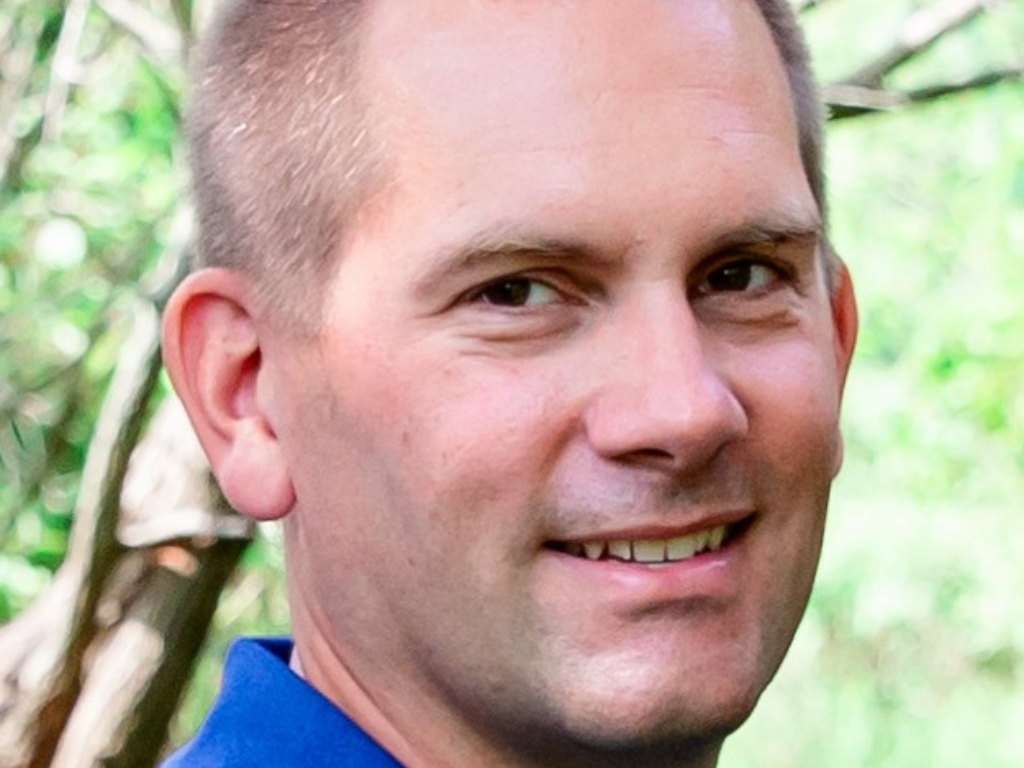
Better Together: Law Enforcement’s Role in Supporting Community Recovery
When we think about substance use response in our communities, we often picture healthcare environments— emergency departments, doctors’ offices, or treatment centers. Yet for many, the path to recovery starts in a very different place: a crucial encounter with law enforcement. For aspiring healthcare professionals—like Wisconsin AHEC Scholars and other future healthcare professionals taking part in our Community Health Immersions (CHIs)—recognizing this link between law enforcement and healthcare is essential. These moments reveal just how effective collaborative, trauma-informed care can be in empowering individuals to find wellness.
“Trust Your Training”: Insights from DRE Nick Place
At our recent CHI event, police officer Nick Place shared his expertise in Navigating Pathways to Recovery. With 23 years of service in Northeast Wisconsin, Place has dedicated much of his career to addressing substance use challenges. As a certified Drug Recognition Expert (DRE) since 2004, he now trains fellow professionals in crucial skills ranging from Standardized Field Sobriety Testing (SFST) to Drug Impairment Training for Education Professionals (DITEP).
Place’s core message—“Trust your training”—bridges the worlds of law enforcement and healthcare, emphasizing how evidence-based practices are fundamental in supporting individuals affected by substance misuse.
Bridging Law Enforcement and Healthcare Through Holistic Assessment
Place emphasized the value of holistic assessment when working with individuals who may be experiencing substance misuse challenges. For our future healthcare professionals, this training provided essential insights into observation and assessment techniques that complement clinical care. Key components include:
- Physical Indicators: eye movements, pupil response, tongue appearance, and fingertip examination
- Behavioral Changes: mood shifts, anxiety levels, or erratic actions
- Contemporary Challenges: new synthetic substances and inconsistent drug formulations
- Thorough Screening: leveraging lab tests while respecting each test’s inherent limitations
For students like Cortney Racine, a Nursing major at Viterbo University, Place’s teaching shed light on the overlap between law enforcement and healthcare approaches. “This presentation strengthened my foundation for conducting thorough nursing assessments” she shared. “Understanding how to evaluate the whole person – from pupil response to behavioral changes – helps us provide more comprehensive care. Learning about specialized testing procedures, both in law enforcement and healthcare settings, showed me how important it is to know our lab capabilities and limitations when developing treatment plans.”
Why It Matters: Wisconsin’s Substance Use Landscape
Wisconsin, like many states, faces an evolving landscape of substance use that demands up-to-date knowledge and responsive care from healthcare professionals. Our CHI explored several critical topics shaping the local substance use climate:
- Fentanyl’s growing prevalence and the implications for patient care, including the heightened risk of overdose.
- New synthetic substances and emerging medical complications, highlighting the need for targeted testing and specialized treatments.
- Complexity in substance testing and interpretation, underscoring the importance of accurate diagnostics and continuous professional education.
- Comprehensive STI testing, especially crucial given the link between methamphetamine use and higher-risk sexual behaviors.
A startling statistic underscored these discussions: six out of ten illicit tablets may contain a lethal dose. This means many individuals may be unaware they’re consuming substances that could prove deadly. By staying current on emerging drug trends and adopting a trauma-informed approach, providers can offer the proactive, life-saving interventions our communities need.
Trauma-Informed Care: A Shared Responsibility
The overlap between law enforcement and healthcare also reveals a critical chance to practice trauma-informed care. Recognizing that previous trauma affects how people engage with public safety and medical systems, both groups can:
- Use de-escalation tactics that keep the situation calm and safe
- Demonstrate empathy and respect during each encounter
- Provide wraparound services addressing broader social and health needs
When law enforcement and healthcare professionals adopt trauma-informed methods in tandem, they create a safer, more supportive environment for those pursuing recovery.
As Nick Place emphasized, law enforcement may be the first point of contact for many individuals experiencing substance use challenges—but healthcare professionals are key to long-term recovery. By turning these early encounters into opportunities for healing, we can strengthen communities and improve outcomes for everyone.
Professional Development Resources
Healthcare providers seeking to enhance their understanding of substance misuse can access specialized training through Route 961 Training and Consultants, which offers:
- Evidence-based recognition and assessment techniques
- Current trends in substance use and clinical implications
- Customized training for specific healthcare settings
Looking Ahead: Prevention and Environmental Support
In our next post, we’ll spotlight the Northeastern Wisconsin Area Health Education Center’s Substance Use Prevention Team, delving into how environmental factors foster resilience and support recovery. From community-based interventions to policy-level strategies, we’ll show how prevention measures and supportive infrastructures can reduce substance use disorder and empower people on their wellness journey.
Interested in Attending a Community Health Immersion?
Priority is given to AHEC Scholars, but other students may join as space allows! These impactful experiences cover diverse healthcare topics and are offered across Wisconsin.
👉 Learn more about Community Health Immersions
👉 Discover the Wisconsin AHEC Scholars Program
When we stand alongside one another—neighbors, healthcare workers, law enforcement, and community members—we elevate the dignity of those living with substance use challenges and reinforce the ties that hold our community together. Recovery thrives in a space where empathy and support come together.
